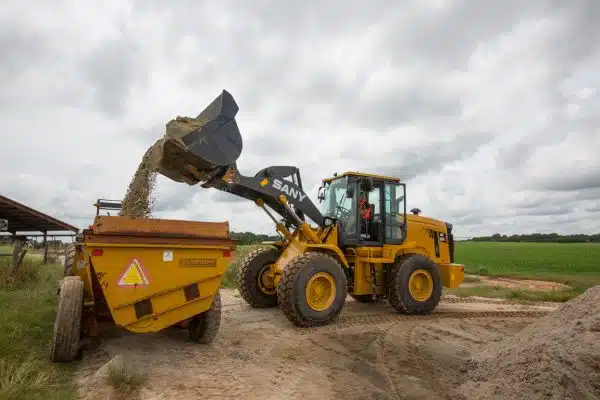Selecting the right attachments for earth moving equipment, such as excavators, is like picking the correct tool for a specific task in a toolbox. Each attachment has a special function to perform.
For instance, if you’re working on a project that requires digging or excavation, you’ll need a digging bucket attachment. On the other hand, a hydraulic breaker or hammer attachment would be more appropriate if it is a demolition project.
Using the wrong attachment can lead to inefficiency, increased project time, and potential damage to the equipment or the project site.
Let’s see how you can choose the proper attachment for your earth moving equipment for the next project you are working on.
What Are Earth Moving Equipments?
Earth moving equipment refers to heavy-duty vehicles specially designed for construction tasks, mostly involving earthwork operations. These machines are essential in construction sites, from excavation and digging to lifting and transporting materials.
Here are some common types of earth moving equipment:
- Excavators: These are large vehicles with a boom, stick, and bucket, used for digging, demolition, lifting heavy objects, and river dredging.
- Mini Excavators: Smaller versions of regular excavators are ideal for tighter work spaces and smaller-scale projects. They are used for digging, trenching, and demolition in confined areas where larger excavators cannot operate.
- Bulldozers: These machines are equipped with a large, flat blade at the front, used for pushing large quantities of soil, sand, rubble, or other such materials during construction work.
- Wheel Loaders: Also known as front loaders or bucket loaders, these machines are used to move or load materials such as asphalt, demolition dirt, snow, debris, logs, raw minerals, recycled material, rock, sand, woodchips, and much more.
What Are The Common Types Of Attachments Required For Earth Moving Equipment?
Earth moving equipment can be fitted with various attachments, each with a unique function that increases the machine’s efficiency.
Here are some common types of attachments and their functions:
- Bucket: The most common attachment for digging, lifting, and carrying materials like soil, sand, and gravel.
- Breaker/Hydraulic Hammer: Used to break hard surfaces like concrete or rock.
- Auger: Augers are used for planting trees, installing posts, or even geotechnical and environmental drilling.
- Ripper: Designed to penetrate and break up hard soil or ice. Rippers are helpful in construction and agriculture.
- Forks: Similar to forklift tines, these attachments are used for lifting and moving pallets of material, pipes, and other similar objects.
- Blade: A broad, flat blade for pushing, levelling, and moving soil, sand, and other materials. It’s particularly useful in grading and road construction.
- Couplers: Not a working tool itself, but an attachment used to switch between different tools more easily and quickly.
What are the Factors to Consider When Choosing Attachments?
When choosing attachments for earth moving equipment like mini excavators, several factors must be considered to ensure efficiency, safety, and cost-effectiveness. Here are the key factors:
- Compatibility with Equipment: Make sure that the attachment is compatible with your earth moving equipment’s specific model and size. Incompatible attachments can cause inefficiency, wear, or equipment damage.
- Job Requirements: Consider the nature of the project. Different tasks like digging, grading, demolition, or material handling require specific attachments.
- Attachment Size and Power: The attachment’s size and power should match your equipment’s operating capacity.
- Material Type: The material you are working with (soil, rock, concrete, etc.) will influence the attachment needed. For example, tougher materials require more robust attachments like breakers or rippers.
- Durability and Quality: Choose attachments made from high-quality materials that offer durability and longevity.
- Ease of Use and Maintenance: Efficient attachment changes can improve job productivity.
- Cost and Budget: While choosing high-quality attachments is essential, they should also fit within your budget. Consider the cost-effectiveness of the attachment, its expected lifespan, and the efficiency it brings to your operations.
- Future Project Needs: Consider whether the attachment can be used for future projects. Choosing versatile attachments that can be used for multiple types of jobs can be more cost-effective in the long run.
By considering these factors carefully, you can make an informed decision that will improve the functionality of your earth-moving equipment. It will also ensure that your projects are completed efficiently, safely, and within budget.
Final Words
Selecting the right attachments for earth moving equipment, including mini excavators, is a vital decision that significantly affects the efficiency, safety, and success of your construction or excavation projects.
Each attachment offers unique capabilities, transforming your machine into a versatile and powerful tool for various tasks.
By thoughtfully considering your specific needs and the safety aspects of each attachment, you can ensure that your mini excavator works at its best, making your projects more efficient and effective.
